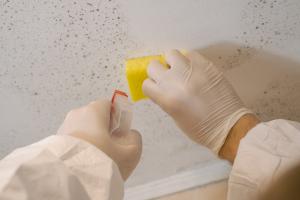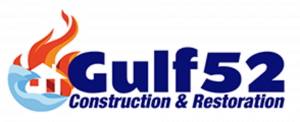The Link Between Humidity and Mold Growth: Managing Indoor Moisture for Structural and Environmental Health
Earl Carr, Jr., president of Gulf 52 in Hammond, Louisiana, notes that controlling indoor humidity is essential for mold prevention. “Mold is not only a reaction to flooding or storm damage. It can begin from something as subtle as excessive indoor humidity that isn’t properly managed,” said Carr. “Consistent moisture levels above 60% allow dormant spores to activate, even in structures with no apparent water intrusion.”
Humidity represents the amount of moisture vapor in the air. In climates like southern Louisiana, where outdoor relative humidity frequently exceeds 70%, buildings must be equipped to prevent moisture accumulation indoors. Poor ventilation, faulty HVAC systems, and unregulated indoor climates contribute to elevated humidity, increasing the risk of microbial growth.
One of the most common environments for mold caused by humidity is within HVAC systems. When cooling systems operate inefficiently or lack proper drainage, condensation can build up within air handlers, ductwork, and vents. This trapped moisture creates localized zones where mold thrives, particularly in dark, enclosed spaces. Over time, these colonies release spores that spread throughout the building, leading to widespread contamination.
Mold resulting from humidity often develops gradually, making it more difficult to detect until odors, discoloration, or health symptoms begin to emerge. Bathrooms, laundry rooms, basements, and kitchens are high-risk zones due to their frequent exposure to steam and condensation. Without active ventilation and moisture control strategies, these areas can foster chronic mold problems.
Managing humidity requires both preventive design and active maintenance. Proper air circulation, dehumidification, and regular inspections are the foundation of indoor moisture control. HVAC systems must be sized appropriately for the space and maintained to prevent condensation buildup. Filters and coils should be cleaned regularly, and duct systems should be inspected for mold or moisture accumulation.
The use of dehumidifiers in moisture-prone areas can be effective in reducing ambient humidity. These systems draw water vapor from the air and collect it in reservoirs or route it through drainage systems. For larger buildings or properties with consistent humidity concerns, integrated humidity control systems may be installed as part of the central HVAC network.
Humidity-related mold growth is often more challenging to address than mold caused by leaks or floods because it affects multiple materials at once—walls, ceilings, furniture, insulation, and textiles. Once mold is established, professional remediation may be required to remove infested materials, sanitize surfaces, and restore indoor air quality.
Building materials also play a role in mold vulnerability. Porous materials such as gypsum board, cellulose insulation, and untreated wood absorb ambient moisture and retain it, especially in areas with limited airflow. In new construction or renovation projects, the use of mold-resistant drywall, treated lumber, and moisture-barrier paints can reduce long-term risk.
Moisture monitoring tools such as hygrometers are valuable for early detection. These devices measure relative humidity levels and alert property managers or homeowners when conditions become conducive to mold growth. Maintaining indoor humidity between 30% and 50% is generally considered optimal for mold prevention.
Windows, doors, and envelope insulation must also be sealed properly to prevent outdoor moisture from entering the building. Vapor barriers in crawl spaces and basements help prevent ground moisture from seeping into living spaces. Roofs, soffits, and exterior walls must be regularly inspected for signs of water ingress or improper drainage.
Regular inspections are essential for identifying hidden problem areas. These inspections should include attic spaces, behind appliances, under sinks, and inside mechanical closets. Even minor sources of humidity, such as an improperly vented dryer or a dripping pipe, can lead to long-term mold development if left unresolved.
Documentation of moisture levels and mold prevention measures may be required for insurance coverage, resale, or compliance with local health regulations. Logs of humidity readings, HVAC maintenance records, and remediation efforts contribute to establishing a record of proactive property management.
Carr emphasizes the long-term implications of indoor humidity mismanagement. “Mold does not require flooding to become a problem. In high-humidity climates, moisture control is as essential as structural protection. Without it, buildings can deteriorate from the inside out.”
With the frequency of severe weather events and rising regional temperatures, properties across the Gulf South face increasing challenges in managing indoor air quality. Long-term mold prevention depends on consistent humidity control, structural awareness, and maintenance protocols that extend beyond visible water damage.
Morgan Thomas
Rhino Digital, LLC
+ +1 504-875-5036
email us here
Visit us on social media:
Facebook
Legal Disclaimer:
EIN Presswire provides this news content "as is" without warranty of any kind. We do not accept any responsibility or liability for the accuracy, content, images, videos, licenses, completeness, legality, or reliability of the information contained in this article. If you have any complaints or copyright issues related to this article, kindly contact the author above.
The Aku Venue Event Center, LLC Earns 2025 Best of South Carolina Award for Excellence in Event Hosting and Planning
Pre-Orders Opened on July 18 for 'Guts Berserker Armor ‘Rage’' Plastic Model Kit
A Voice of Light: Viviana Puello’s Journey Through Music, Film, and Soul
Kalendarium
Więcej ważnych informacji
 Jedynka Newserii
Jedynka Newserii

 Jedynka Newserii
Jedynka Newserii

Prawo

KE proponuje nowy Fundusz Konkurencyjności. Ma pobudzić inwestycje w strategiczne dla Europy technologie
W środę 16 lipca Komisja Europejska przedstawiła projekt budżetu na lata 2028–2034. Jedna z propozycji zakłada utworzenie Europejskiego Funduszu Konkurencyjności o wartości ponad 400 mld euro, który ma pobudzić inwestycje w technologie strategiczne dla jednolitego rynku. Wśród wspieranych obszarów znalazła się obronność i przestrzeń kosmiczna. Na ten cel ma trafić ponad 130 mld euro, pięciokrotnie więcej niż do tej pory.
Firma
Były prezes PGE: OZE potrzebuje wsparcia magazynów energii. To temat traktowany po macoszemu

Choć udział odnawialnych źródeł energii w miksie energetycznym Polski jest stosunkowo wysoki i rośnie, to ten przyrost jest chaotyczny i nierównomiernie rozłożony miedzy technologiami – wskazuje Forum Energii. Dodatkowo OZE potrzebują wsparcia magazynów energii, a zdaniem Wojciecha Dąbrowskiego, prezesa Fundacji SET, ten temat jest traktowany po macoszemu. Brak magazynów powoduje, że produkcja energii z OZE jest tymczasowo wyłączana, co oznacza marnowanie potencjału tych źródeł.
Infrastruktura
Wzrost wynagrodzeń ekip budowlanych najmocniej wpływa na koszty budowy domu. Zainteresowanie inwestorów mimo to nieznacznie wzrasta

Budowa metra kwadratowego domu w Polsce kosztuje od 5,55 do 6 tys. zł w zależności od województwa – wynika z najnowszych analiz firmy Sekocenbud. Najdrożej jest w Warszawie, gdzie cena za metr kwadratowy domu przekroczyła już 6,2 tys. zł. Na przyrosty kosztów budowy domu wpływają zarówno drożejące materiały budowlane, jak i wyższe wynagrodzenia pracowników. Inwestorzy nie rezygnują jednak z budowy domów jednorodzinnych, co ma związek m.in. z wciąż wysokimi cenami mieszkań czy też obniżką stóp procentowych.
Partner serwisu
Szkolenia

Akademia Newserii
Akademia Newserii to projekt, w ramach którego najlepsi polscy dziennikarze biznesowi, giełdowi oraz lifestylowi, a także szkoleniowcy z wieloletnim doświadczeniem dzielą się swoją wiedzą nt. pracy z mediami.










.gif)

 |
| |
| |
|